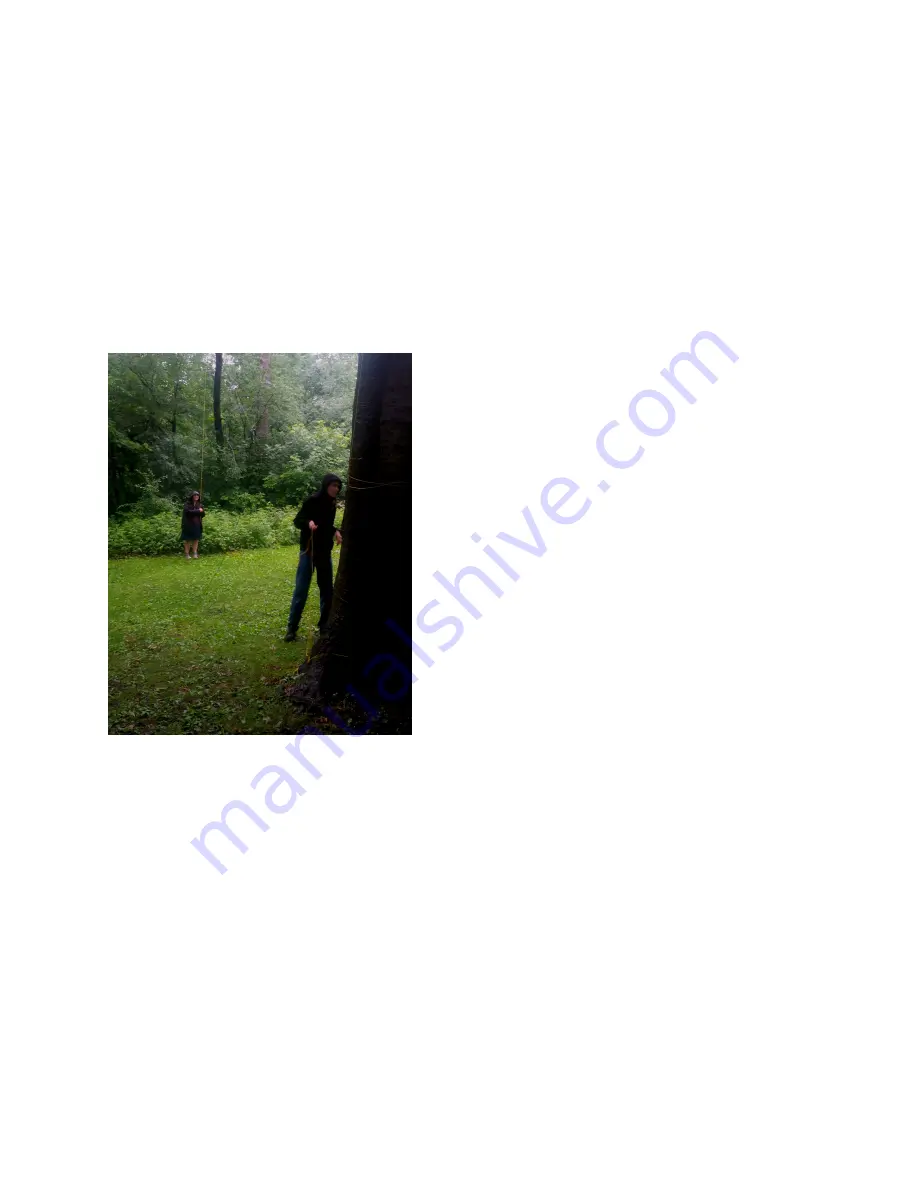
HF bands are capable of long-distance and international transmissions (often referred to as
DX) because the radio bands bounce o a layer of the atmosphere (called the ionosphere)
before reaching the ground. This allows for transmissions that can reach much further than
those received via line-of-sight. In general, the higher frequency bands work better during the
day, and the lower frequency bands work better overnight.
Solar phenomena and their eects on the ionosphere can have profound eects on RF propa-
gation. You can check for reports of this online; many amateur clubs and other reference sites
host solar activity information.
3 Erect an appropriate antenna
Figure 3: Antenna setup, Field Day 2015
You may already have an available antenna
mounted somewhere. If so, you can skip this step.
Otherwise, once you have selected a band, we need
to select an antenna of appropriate length, corre-
sponding to the band you want to transmit and
receive on. There are a number of dierent an-
tenna types, but we'll just refer to a simple wire
dipole; for more complex antennas, see their oper-
ating manuals.
A wire dipole is cut to a specic length, at-
tached at the center to a feed line, and can con-
veniently be strung up in trees or on other tall,
non-conductive structures. Simply tie the ends
of the antenna to some twine and hoist each end
up to an appropriate height: about 5m above
the ground works best. Secure the twine and
you are ready to connect your antenna to your
transceiver.
4 Ground the tranceiver
Attach a ground line by loosening the wingnut on the GND port, attaching a ground wire, and
then tightening the wingnut. You'll need to ground the other end by driving it into the ground
with a grounding pole.
If that's not an option, attach it to a metal surface that is known to be grounded with electrical
tape, such as window siding or water pipes. (I recommend you do not attach it to your faucet.)
5 Power and tuning
Plug in your radio to a standard power source. The Kenwood TS-830S supports both 120V
and 220V power sources, so make sure the switch on the back is set correctly.
3























